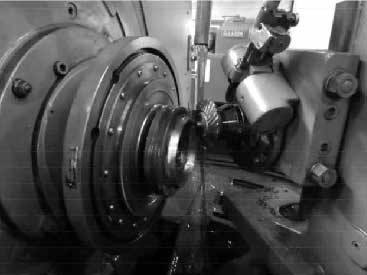Custom gear manufacturing plays a crucial role in meeting the unique requirements of specialized applications across various industries. Unlike standard gear production, which relies on established designs and specifications, custom gear manufacturing involves creating gears that are tailored to specific performance criteria, dimensions, and materials. This process enables the development of solutions that perfectly fit the needs of applications with unique or challenging requirements. Here’s a comprehensive look at the process and considerations involved in custom gear manufacturing:

1. Understanding Client Needs
- Initial Consultation: The process begins with a thorough understanding of the client’s needs, including the application, performance requirements, environmental conditions, and any constraints related to space or compatibility with other components.
- Feasibility Study: Engineers and designers conduct a feasibility study to ensure that the proposed design can meet the requirements within the given constraints.
2. Design and Prototyping
- Custom Design: Utilizing advanced CAD software, engineers develop a custom gear manufacturing design. This stage might involve multiple iterations to refine the gear’s specifications, ensuring optimal performance and integration.
- Material Selection: Based on the gear’s application, custom materials or special alloys might be selected to achieve the desired strength, durability, and resistance to wear and environmental factors.
- Prototyping: Rapid prototyping, often using additive manufacturing techniques, allows for the production of a physical model of custom gear manufacturing for testing and validation purposes.
3. Advanced Manufacturing Processes
- Precision Machining: Custom gear manufacturing often require precision machining to achieve the specific dimensions and tolerances. CNC machining centers are typically used for this purpose.
- Specialized Gear Cutting Techniques: Depending on the gear type and complexity, specialized gear cutting techniques, such as hobbing, shaping, or broaching, are employed.
- Heat Treatment and Surface Finishing: To enhance performance, custom gear manufacturing may undergo specific heat treatments and surface finishing processes tailored to the application’s requirements.
4. Quality Assurance and Testing
- Inspection and Measurement: Rigorous quality control measures are implemented throughout the manufacturing process. Dimensional accuracy and material properties are verified using advanced measurement and testing equipment.
- Performance Testing: Custom gear manufacturing is often subjected to extensive performance testing in simulated application conditions to ensure they meet all operational requirements.
5. Integration and Support
- Integration Assistance: Manufacturers may provide support services to assist with the integration of the custom gear manufacturing into the client’s system, ensuring proper installation and function.
- Documentation: Comprehensive documentation, including detailed design specifications, material certifications, and maintenance guidelines, is provided to the client.
- After-Sales Support: Ongoing support, including maintenance advice, repair services, and potential future modifications or upgrades, ensures the long-term performance and satisfaction of the client.
Conclusion
Custom gear manufacturing requires a high level of expertise, advanced technology, and close collaboration between the manufacturer and the client. It offers a solution for applications where standard gears cannot meet the necessary performance, durability, or integration requirements. By tailoring gears to specific needs, custom gear manufacturing enables innovations and efficiencies in a wide range of industrial applications, from aerospace and automotive to robotics and renewable energy. This bespoke approach ensures that even the most challenging requirements can be met, driving forward advancements in technology and industry.
